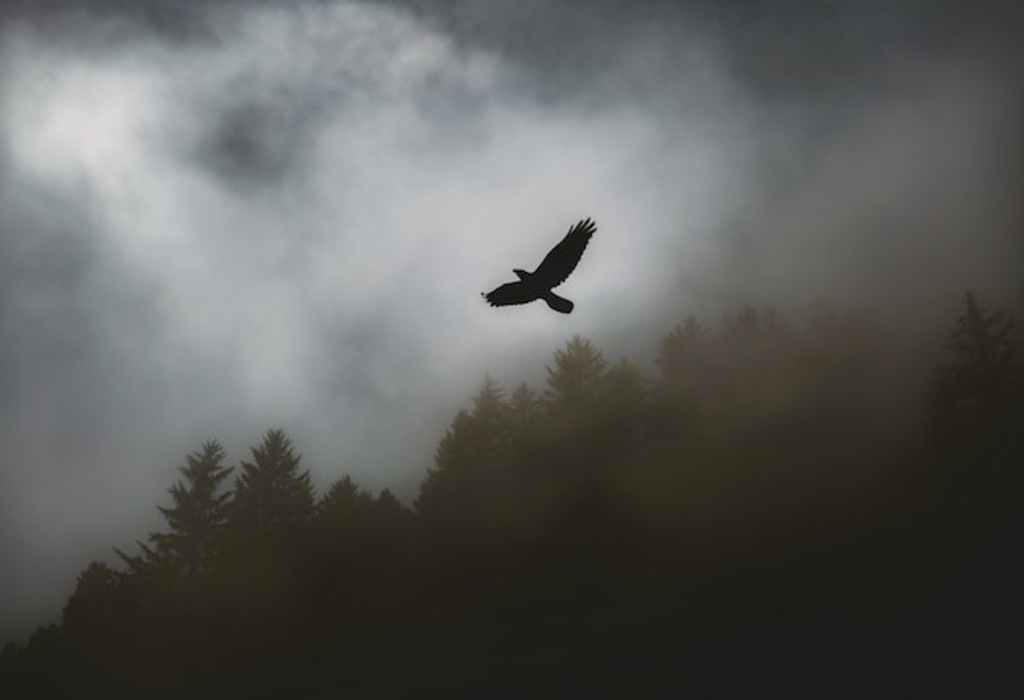Welcome to the fascinating realm of mastering flying bird silhouette identification! In this exciting journey, we’ll delve into the intricacies of recognizing and understanding bird shapes against the sky. Get ready to broaden your birdwatching horizons and develop a keen eye for the diverse array of winged wonders that grace our skies!
Table of Contents
- 1 Key Takeaways
- 2 The Importance of Silhouette Identification in Birdwatching
- 3 How To Master Flying Bird Silhouette Identification
- 4 Understanding Wing Shapes and Proportions
- 5 Analyzing Tail Lengths for Identification
- 6 Identifying Birds by Body Size
- 7 Common Silhouettes of Birds in Flight
- 8 Tips for Observing Birds in Flight
- 9 Using Binoculars for Better Identification
- 10 Learning from Experienced Birdwatchers
- 11 Practicing Silhouette Identification in the Field
- 12 Taking Your Birdwatching Skills to the Next Level
- 13 Frequently Asked Questions
- 13.1 What is the best time of day to observe birds in flight?
- 13.2 How do weather conditions affect bird flight patterns?
- 13.3 What is the most effective way to track migrating birds?
- 13.4 How do you differentiate between similar bird species based on their silhouettes?
- 13.5 What are some common mistakes beginners make when identifying birds by their silhouettes?
- 14 Conclusion
- 15 Author
Key Takeaways
- Silhouette identification is a crucial skill in birdwatching, particularly for distinguishing between similar-looking species and identifying rare or elusive birds.
- Understanding bird behavior, calls, and environmental cues can aid in silhouette identification.
- Wing shape and proportion, tail length, plumage coloration, and behavioral patterns are essential factors for analyzing bird identification.
- Practicing silhouette identification in the field and combining it with other methods can enhance birdwatching skills, and technology such as birding apps can aid in bird identification.

The Importance of Silhouette Identification in Birdwatching
The ability to identify flying birds by their silhouettes is a crucial skill in birdwatching, as it enables observers to quickly and accurately identify species without the need for detailed visual cues.
Understanding the importance of bird behavior in identification, recognizing bird calls for identification, and using environmental cues for bird identification can all aid in the process of identifying birds by their silhouettes.
Many bird species have distinct flight patterns and behavioral habits, which can be helpful in distinguishing them from other species.
Recognizing bird calls and songs can also be useful in identifying species, as certain calls are unique to specific species.
Additionally, environmental cues such as location, weather, and time of day can provide clues to the identity of the bird.
By combining these factors with an understanding of wing shapes and proportions, birdwatchers can become adept at identifying birds by their silhouettes.
How To Master Flying Bird Silhouette Identification
Master flying bird silhouette identification with these steps: study wing shapes, observe common species, use guides, practice observation, join birdwatching groups, utilize identification tools, create a reference collection, be patient, and enjoy the process. Happy birdwatching!
Understanding Wing Shapes and Proportions
Examining the wing shapes and proportions of avian species provides valuable insights into their flight patterns and behaviors, invoking awe and appreciation for the intricacies of nature.
Understanding wing anatomy, comparing wing shapes, and recognizing wing patterns are crucial skills for identifying flying birds by their silhouettes.
The shape and size of a bird’s wings determine how it flies, hunts, and avoids predators.
For example, birds with broad wings, such as eagles and hawks, are adapted for soaring and gliding, while birds with pointed wings, such as falcons and swallows, are designed for speed and agility.
Wing proportions, such as the ratio of the length to the width of the wing, also reveal critical information about a bird’s behavior.
For instance, birds with long, narrow wings, such as swifts and terns, are adept at hovering and diving to catch prey.
By comparing the wing shapes and proportions of different bird species, birdwatchers can quickly identify and distinguish them from each other.
The following table illustrates the differences in wing shapes and proportions among some common bird species:
| Bird Species | Wing Shape | Wing Proportion |
|---|---|---|
| Bald eagle | Broad | Long and wide |
| Peregrine falcon | Pointed | Short and narrow |
| Barn swallow | Pointed | Long and narrow |
| Turkey vulture | Broad | Short and wide |
Analyzing tail lengths for identification requires a similar level of attention to detail and knowledge of bird anatomy.
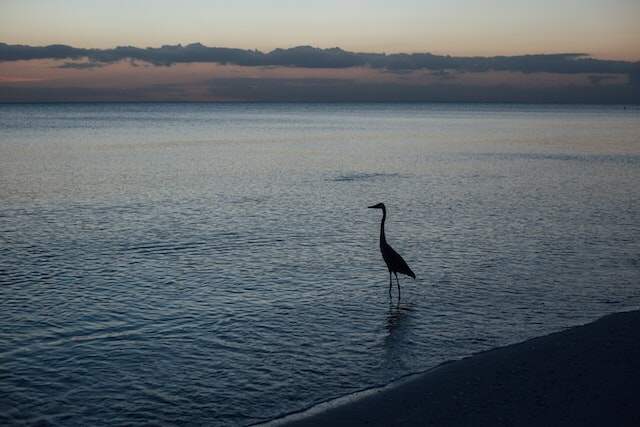
Analyzing Tail Lengths for Identification
Analyzing tail lengths is a crucial aspect of avian identification that requires a thorough understanding of bird anatomy and the variations in tail shape and size among different species.
Tail length variations, plumage coloration, and behavioral patterns are all essential factors to consider when analyzing bird identification.
Different bird species have different tail shapes and sizes, which are useful in identifying them.
For example, birds like swallow-tailed kite have elongated, forked tails, while birds like woodpeckers have short, stiff tails.
Birders can also use the length and shape of the tail feathers to identify individual species. Additionally, the color and pattern of the tail feathers can help differentiate between similar-looking species.
For example, the white-tailed kite has a white tail, while the Mississippi kite has a black tail with a white band. Understanding these subtle differences is crucial in identifying birds accurately.
The next section will focus on identifying birds by body size, which is another essential aspect of avian identification.
Identifying Birds by Body Size
One way to distinguish between different bird species is by comparing the relative sizes of their bodies, as certain species may have noticeably larger or smaller bodies than others.
Comparing plumage, understanding behavior, and recognizing vocalizations are also useful in identifying birds.
In terms of body size, larger birds tend to have longer wingspans and fly more slowly, while smaller birds have shorter wingspans and fly more quickly.
Additionally, birds of prey tend to have larger bodies to support their hunting activities, while migratory birds have smaller bodies to conserve energy during long flights.
By taking these factors into consideration, bird watchers can more accurately identify flying birds by their silhouettes.
In the next section, we will explore some common silhouettes of birds in flight.
Common Silhouettes of Birds in Flight
Different bird species can be distinguished by their unique shapes and profiles when in flight, making the identification of bird species based on silhouettes an essential skill for birdwatchers.
For instance, hawk and falcon silhouettes can be differentiated by their wing shapes, with hawks having broader wings and falcons having pointier wings.
Water bird silhouettes, on the other hand, are characterized by their long necks and bills.
Some bird species, such as the Northern Harrier, have a distinctive owl-like facial shape that helps to identify them in flight.
It is worth noting that bird silhouettes may vary depending on the bird’s age, sex, and the time of year.
Birdwatchers must be familiar with the unique silhouettes of different bird species to accurately identify them in flight. This knowledge can be gained through regular observation and study of bird field guides.
In the next section, we will discuss some tips for observing birds in flight.
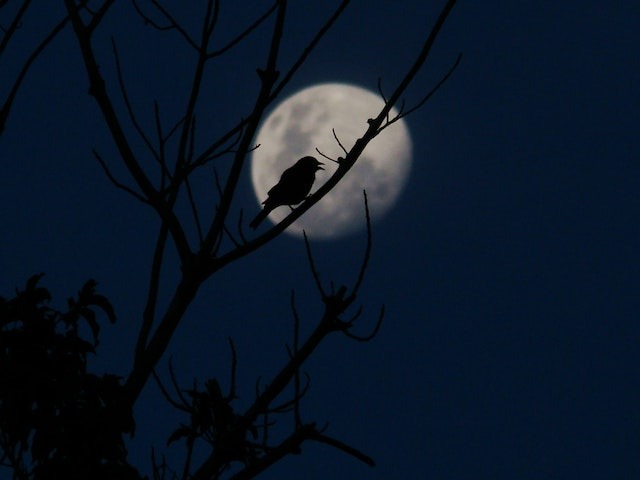
Tips for Observing Birds in Flight
Observing birds in flight requires a keen eye and an understanding of the unique characteristics of each species, including their behavior, flight patterns, and habitat preferences.
Here are some techniques for tracking and recording sightings, as well as observing bird behavior:
1) Learn the flight patterns of the most common species in your area, such as the V-shaped formation of geese or the erratic flight of swallows.
2) Use a field journal to record your observations, including the time of day, weather conditions, and any behavioral cues you notice.
3) Watch for changes in behavior, such as a bird diving or swooping, which may indicate an attack or defensive maneuver.
4) Take note of the habitat preferences of each species, as birds tend to stick to certain areas based on food availability and nesting locations.
5) Maintain Location Records: Record the precise location of bird sightings. Maintaining an accurate map of your whereabouts offers numerous benefits, aiding future research and contributing to scientific endeavors like ebird.org.
Detailed location data is invaluable for scientific studies and citizen science initiatives, enhancing our understanding of bird populations and their habitats.
By utilizing these techniques, you can improve your ability to identify birds in flight and gain a deeper understanding of their behavior. Using binoculars for better identification is the next step in this process.
Using Binoculars for Better Identification
Observing birds in flight can be a challenging task, but there are several tips and techniques that can help make identification easier.
One useful tool for birdwatchers is a pair of binoculars, which can provide a closer look at the bird’s features and behavior.
However, using binoculars effectively requires finding good viewing locations and understanding lighting conditions, as these factors can greatly impact the clarity and detail of the image.
It is important to position oneself in a location where the bird is well-lit and in clear view, and to adjust the focus and magnification of the binoculars accordingly.
By mastering these techniques, birdwatchers can gain a better understanding of the species they are observing and make more accurate identifications.
As with any skill, learning from experienced birdwatchers can also provide valuable insights and knowledge about how to identify flying birds by their silhouettes.
Learning from Experienced Birdwatchers
Gaining insights and knowledge from experienced birdwatchers is akin to unlocking a treasure trove of secrets that can reveal the hidden nuances and intricacies of bird behavior and movement.
Sharing techniques and personal anecdotes, as well as community involvement, are essential aspects of learning from these experts.
When it comes to identifying birds by their silhouettes, experienced birdwatchers can provide valuable insights into the different shapes and patterns that birds exhibit while in flight.
They can also share tips on how to identify certain species based on their unique characteristics, such as wing shape and tail length.
By learning from these experts, birdwatchers can gain a deeper understanding of the behavior and movement of birds, which can ultimately lead to more successful birdwatching experiences.
Practicing silhouette identification in the field is the next step in honing this skill, and it is an essential part of becoming a skilled birdwatcher.

Practicing Silhouette Identification in the Field
Practicing the art of silhouette identification in the field can be a thrilling experience, as it allows for a deeper appreciation of the unique shapes and patterns of birds in flight.
Field techniques for identifying landmarks, such as trees or buildings, can aid in identifying birds by their size and shape in relation to their surroundings.
Shadow recognition can also be helpful, as the angle and shape of a bird’s shadow can provide clues to its species.
It is important to observe the bird’s flight pattern, wing shape, and tail length when attempting to identify its silhouette.
Practicing these techniques can improve one’s ability to identify birds by silhouette and add to the enjoyment of birdwatching.
Taking your birdwatching skills to the next level involves combining knowledge of silhouettes with other identification methods, such as song recognition and field markings.
Taking Your Birdwatching Skills to the Next Level
After practicing silhouette identification in the field, it’s time to take your birdwatching skills to the next level.
Improving accuracy is crucial in identifying flying birds by their silhouettes. Recognizing patterns is also important as it helps in identifying the species of the bird.
Utilizing technology can also aid in bird identification, such as using birding apps that provide bird calls and images.
By combining these techniques, birdwatchers can enhance their skills and become more proficient in identifying flying birds by their silhouettes.
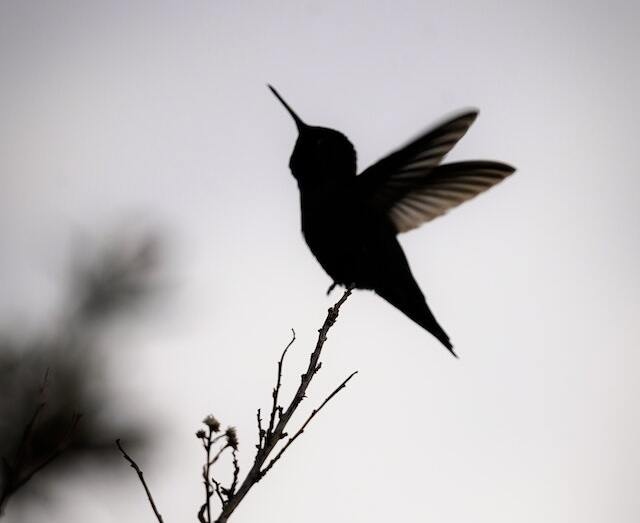
Frequently Asked Questions
What is the best time of day to observe birds in flight?
As a general rule, birds are more active during the early morning and late evening hours. Bird flight behavior can vary by season, so observing during different times of year can yield different results. The best equipment for watching birds in flight includes binoculars and spotting scopes.
How do weather conditions affect bird flight patterns?
Birds have adapted to various weather conditions, including wind, rain, and temperature changes. Adverse weather can alter bird behavior, affecting their flight patterns and migration routes. Different climates also impact bird flight, with some species thriving in hot, dry environments and others in colder, wetter climates.
What is the most effective way to track migrating birds?
Utilizing advanced technology, such as GPS tracking and weather radar, is the most effective way to track migrating birds. Understanding their migration patterns is crucial for conservation efforts, as human activities can disrupt their journey.
How do you differentiate between similar bird species based on their silhouettes?
Identification of flying birds based on their silhouettes involves a nuanced technique of size comparison, wing shape, and tail length. Differentiating between similar bird species requires careful observation and analysis. A technical and scientific approach can aid in accurate classification for a freedom-seeking audience.
What are some common mistakes beginners make when identifying birds by their silhouettes?
Misconceptions about identifying birds by their silhouettes include assuming all birds have distinct shapes and underestimating the importance of lighting and angle. Training resources with detailed descriptions and images can aid in overcoming common identification challenges.
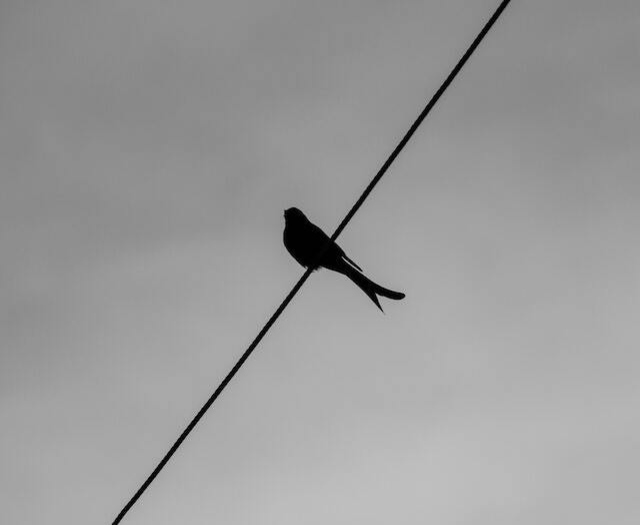
Conclusion
Silhouette identification is a crucial skill for birdwatchers. By analyzing the shape and proportions of a bird’s wings and tail, as well as its body size, birdwatchers can identify birds in flight without relying on color or markings.
Common silhouettes of birds in flight include the V-shape of geese, the straight wings of hawks, and the rounded wings of doves. Using binoculars can also aid in identification, as they allow for a closer look at the bird’s silhouette.
Learning from experienced birdwatchers and practicing in the field can also improve one’s silhouette identification skills.
By mastering this skill, birdwatchers can take their hobby to the next level and gain a deeper understanding and appreciation for the birds they observe.
In conclusion, silhouette identification is an essential skill for birdwatchers.
By understanding the various shapes and proportions of a bird’s wings, tail, and body, birdwatchers can identify birds in flight with ease. This skill requires practice and patience, but with time, it can be mastered.
As the great naturalist John Muir once said, ‘In every walk with nature, one receives far more than he seeks.’
By honing their silhouette identification skills, birdwatchers can gain a deeper appreciation for the beauty and complexity of the natural world.

